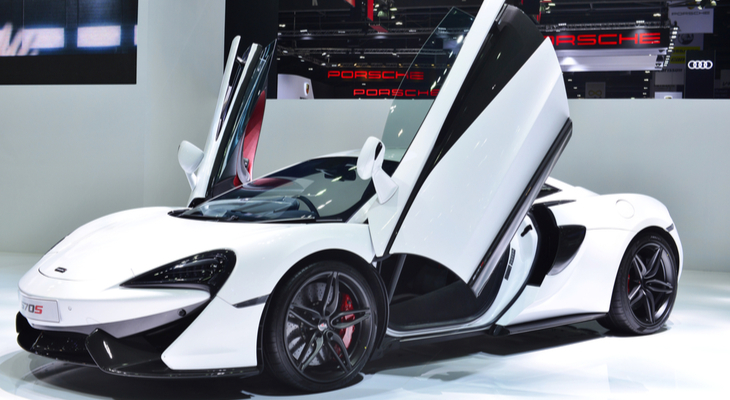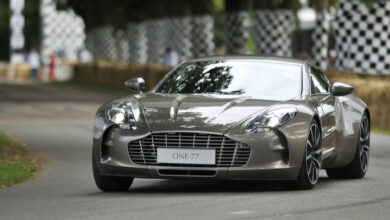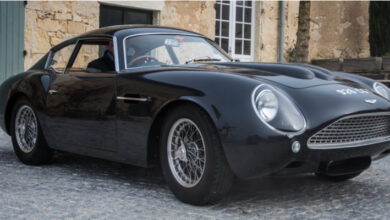Setting the World’s Top Speed Record with the McLaren F1

When British supercar manufacturer McLaren steps to the plate, they always knock it out of the park. They continue building extraordinary machines to this day but one of their past models is still legendary. The McLaren F1 did not just change the supercar game, it re-wrote the entire book.
Gordon Murray is responsible for dreaming the concept of the F1 into existence. He took his idea to Ron Dennis, the founder of the McLaren Group. They brought Peter Stevens in to help design the interior and exterior of the McLaren F1.
After quickly getting to work, the team decided to use a BMW S70/2 V12 engine. This engine is BMW’s high-performance version of their first production V12, the M70. From 1992 to 1998, McLaren built 106 total F1 supercars.
One of the most unique characteristics of the McLaren F1 is that it is a three-seater. With the goal of creating the perfect road car, designers placed the driver’s seat right in the middle of the cockpit. The two passenger seats are behind the driver’s seat.
An added benefit to this layout is providing superior driving visibility. It may not be the car your significant other wants you to buy but it is the one you want to drive.
Even though the McLaren F1 is not a purpose-built track car, it can certainly perform like one. With some modifications, a race car version of the McLaren F1 won plenty of checkered flags. One of the events the McLaren F1 race car won was the 1995 24 Hours of Le Mans.
Street-Legal with Racing Spirit
All around the world, the McLaren F1 gets respect. Many publications rate the F1 very high on their greatest supercars of all-time lists. In 2005, British television’s Channel4 rated the F1 number one on their list of 100 best cars.
Admiration for the engineering of the F1 continues in the modern era. In April of 2017, Top Gear Magazine listed the McLaren F1 as one of the fastest naturally-aspirated cars currently available in the entire world.
Top Gear Magazine goes on to mention the F1 in the same breath as more modern marvels such as the Ferrari Enzo and the Aston Martin One-77. Not too shabby considering the F1 is 10 years older than the Enzo and 17 years older than the One-77.
The McLaren F1 is a 2-door, rear mid-engine, rear-wheel-drive sports coupe. It is a lightweight, powerful, and aerodynamically tuned high-performance speed demon.
Many supercars use smaller displacement 12-cylinders compared to the McLaren F1’s massive 6.1L engine. BMW and McLaren squeeze 618 horsepower and 479 pound-feet of torque out of this V12. The exhaust note sounds incredible while the engine delivers even better performance than you would expect from its era.
A 6-speed manual transmission shifts gears in the McLaren F1. If you can keep up with the power, you’ll go from 0 to 60 miles per hour in just 3.2 seconds. Going from 0 to 100 mph only takes 6.3 seconds. There’s more, it can go from 0 to 200 mph in 28 seconds if you have the time to spare.
Handling is exceptional in the McLaren F1. The double-wishbone suspension keeps it tight while the lightweight design certainly helps. You can always depend on Brembo brakes for stopping power when things pucker up out there.
McLaren F1 Dimensions:
Wheelbase – 107 inches or 2,718 mm
Length – 168.8 inches or 4,287 mm
Width – 71.7 inches or 1,820 mm
Height – 44.9 inches or 1,140 mm
Curb Weight – 2,509 pounds or 1,138 kg
Record Breaking Run
Back in 1993, McLaren built five different F1 prototypes designated with an XP chassis prefix. There was an XP1, XP2, XP3, XP4, and the now famous XP5. Over the years, the McLaren team continued tweaking the XP5 to perfection.
By March 31, 1998, the team was finally ready to seriously test the McLaren XP5. They modified the rev limiter a bit and set out to break the speed record.
To say the XP5 prototype passed with flying colors would be an understatement. It didn’t just break the Jaguar XJ220’s record as the fastest production car, the XP5 prototype shattered it. The prototype hit 240.1 miles per hour, surpassing the XJ220’s 217.1 mph benchmark.
Breaking this record made the McLaren F1 the fastest production car of its time. Many people argue this is the best supercar ever built. There is no doubt the F1 certainly makes a very strong case.
If you want to get your hands on the XP5 prototype, get in line. McLaren retains the car in their heritage collection to this day. As for finding any other McLaren F1 for sale, before you proceed, understand this is blank check territory.
Just to give you an example, in 2019 the rarest McLaren F1 on Earth was available through an RM Sotheby’s auction. At the time the expected value was around $23 million. That particular F1 went to the highest bidder for $19,805,000 giving the lucky winner a nice discount.
After that sinks in, if you still are in the market, be patient. These are rare cars indeed. Interested parties always face stiff competition from fellow enthusiasts and collectors.
For those who do get the pleasure of owning a McLaren F1, you are joining an impressive list of current and former owners. Jay Leno, Elon Musk, and even the drummer from Pink Floyd, Nick Mason, have all had the pleasure.
Although it’s true McLaren made a total of 106 F1 models, only 64 of them are road cars. A recent private sale opportunity landed another lucky owner a McLaren F1 in March of 2021. This is not the kind of supercar that is available very often.
Expect prices to be in the eight-figure range consistently when you do find one. Auctions and private inquiries are common for exotic cars such as the McLaren F1. If you really want an F1, keep trying and your persistence might pay off.
At the end of the day, a car like the McLaren F1 is not only worth the wait, it is truly a one-of-a-kind experience. From the BMW M division tuned V12 to McLaren’s outstanding engineering, sitting behind the wheel of an F1 will never disappoint. If you get your hands on a McLaren F1, you should enjoy every single mile you can put on it.



